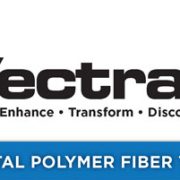Dyneema® Fibre – Characteristics
Dyneema® fibre is the brand name for High Modulus Polyethylene (HMPE) fibre also referred to as Ultra High Molecular Weight Polyethylene (UHMWPE ).
Lighter than water, Dyneema® fibre is 15 times stronger than quality steel on a weight to weight basis and 7 times stronger based on a matching diameter. It is very static and very resistant to abrasion, UV, moisture and chemicals.
| CHARACTERISTICS | |
| Strength | Very high |
| Stretch | Very low, ~1% stretch while pulling @ 30% of the minimum break strength |
| Creep* | Low** |
| Weight | Very light (0.98 SG) |
| Melting point | 300°F (149°C) |
| Long term max temp | 158°F (70°C) |
| Bleaches / Solvents | Excellent |
| Weak acids / alkali | Excellent |
| Strong acids / alkali | Excellent |
| Abrasion resistance | Very Good |
| Mildew / aging / UV | Excellent |
*Creep is a function of load and time ** Low-creep (SK-78) and no creep (DynaMax)
Standard ABL products made with this fibre include SupreemX-12™, TorX-12™, CoreX-12™, HardLine™.






